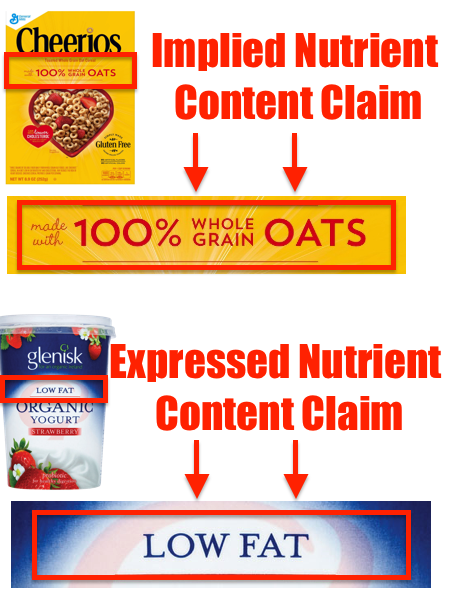What You Need to Know:
The label "gluten-free" is meant to protect people who have celiac disease. A "gluten-free" claim is considered neither a health claim or a nutrient content claim.
A food processor may make a "gluten-free" claim on their food product without any additional registration or notification insofar as they meet the FDA requirements for making this claim.
The following common grains contain gluten:
Wheat (genus Triticum)
Rye (genus Secale)
Barley (Genus Hordeum)
Any food whose label says "Contains Wheat" should be understood to contain gluten unless there is a disclaimer stating that the gluten has been removed in the manufacturing process.
Requirements for Using a Gluten Free Claim:
The following are specific product requirements for a food labeled as "gluten free". Such a food must:
Cannot contain any gluten containing ingredients or grains (wheat, rye, barley)
Cannot contain any ingredients derived from gluten-containing ingredients (i.e. "wheat flour")
May contain an ingredient that has been processed to remove gluten (i.e. wheat starch). However, your food must ultimately contain less than 20mg gluten per 1kg of food.
If your product contains wheat or lists "wheat" on the ingredient label and bears a "gluten-free" claim, then you must state the following "the wheat has been processed to allow this food to meet the FDA requirements for gluten free foods."
No additional registration or notification is required to make this claim.
How to Create an FDA Compliant "Gluten-Free" Claim
Make sure your product complies with the requirements above (i.e. it doesn't contain gluten)
Check all of the labels of ingredients in your product to confirm that none of the component ingredients in your food product contain gluten.
Review all of the ingredients each time you change ingredients, suppliers, or recipes to confirm that your claim is still valid.
Confirm that there is no way your product could be contaminated with gluten in the production process.
Confirm that your gluten free claim is aligned with the requirements described in this section.
FAQ
WHAT ARE FOODS THAT TYPICALLY CONTAIN GLUTEN?
Wheat
Bread
Baked Goods
Pasta
Cereal
Salad Dressing
Rye:
Rye Bread
Cereals
Keep an Eye On:
Soups
Processed Meats
Salad Dressing/Marinades
Potato Chips
Other Gluten-Containing Grains:
Durum
Farro
Semolina
Bulgur
Kamut
Spelt
Triticale
Barley:
Malt
Food Coloring
Soups
Malt Vinegar
Beer
WHAT FOOD PRODUCTS DOES THE FDA REGULATION COVER?
This covers all FDA-regulated packaged foods, including dietary supplements. The rules exclude products under the USDA (eggs, poultry, meat, generally) and products under the TTB (liquor, wines an malted beverages)
IS THERE AN ACCEPTABLE LEVEL OF GLUTEN IN A "GLUTEN-FREE" PRODUCT?
The FDA regulations stipulates that, when unavoidable, there is an acceptable threshold of 20ppm (parts-per-million) or 20mg of gluten per 1kg of food.
Practically, in order to use the label "gluten-free" your product must not cause adverse reaction in someone with celiac disease (which is more serious than a gluten sensitivity).
A product that is labeled "gluten-free" and creates an adverse reaction to someone with celiac disease may draw scrutiny, investigation and possible recall from the FDA, even if the product falls under the acceptable threshold.
ARE TERMS SUCH AS "NO GLUTEN", "FREE OF GLUTEN", AND "WITHOUT GLUTEN" REGULATED?
Terms such as "no gluten", "free of gluten", and "without gluten" are all regulated by the FDA and are subject to the same requirements as a "gluten free" label claim.
You may make the claim "made with no gluten-containing ingredients" without adhering to the specific requirements of this section (listed above or found in §Subpart F 101.91) insofar as your claim is truthful and not misleading.
CAN I MAKE A GLUTEN-FREE CLAIM IF GLUTEN IS PROCESSED IN MY FACILITY?
Yes. Ultimately what matters is that your product will not cause an adverse reaction in someone who has celiac disease. In that case, the FDA would test your product too see if it passes the standard for gluten-free products (<20ppm gluten)
If gluten is processed in a facility where you make your gluten-free product, your ability to make a truthful claim depends on how you are able to separate your product from gluten and eliminate any threat of allergen contamination between products. Generally, this can be achieved through following Current Good Manufacturing Practices and addressing any possible scenario where gluten-contamination of your product could occur.
If you are still unsure of your ability to make this claim, you may consider making the following claim on your product: "made with no gluten-containing ingredients".
This term is not regulated according to the FDA requirements for gluten-free labeling (found in §Subpart F 101.91) and can be made insofar as the claim is truthful and not misleading.
AM I REQUIRED TO CONDUCT TEST FOR GLUTEN IF I MAKE A GLUTEN-FREE CLAIM?
No, you are simply responsible for ensuring your product meets the requirements for gluten free. A food processor may wish to test their product for gluten as a quality control measure but it is not required.
WHAT IS "CERTIFIED GLUTEN-FREE"?
Note that, while certification bodies exist, certification is not required to label your product as "gluten-free"
There are several private organizations that provide certification for gluten-free claims. It works like this: food businesses pay the certifying body to conduct certification activities. If the food business passes, then they can use the certifying organizations logo on their product.
These certification names and logos may provide some consumers with assurance that the product is safe to consume.
Examples of these certifying groups include:
Gluten Free Certification Organization
Celiac Support Association
Allergen Control Group
Each of these programs dictates their own standards for certifying a product as "gluten-free" . This may include specific ingredient requirements, sending your product to the organization for gluten testing, and a facility inspection.






































